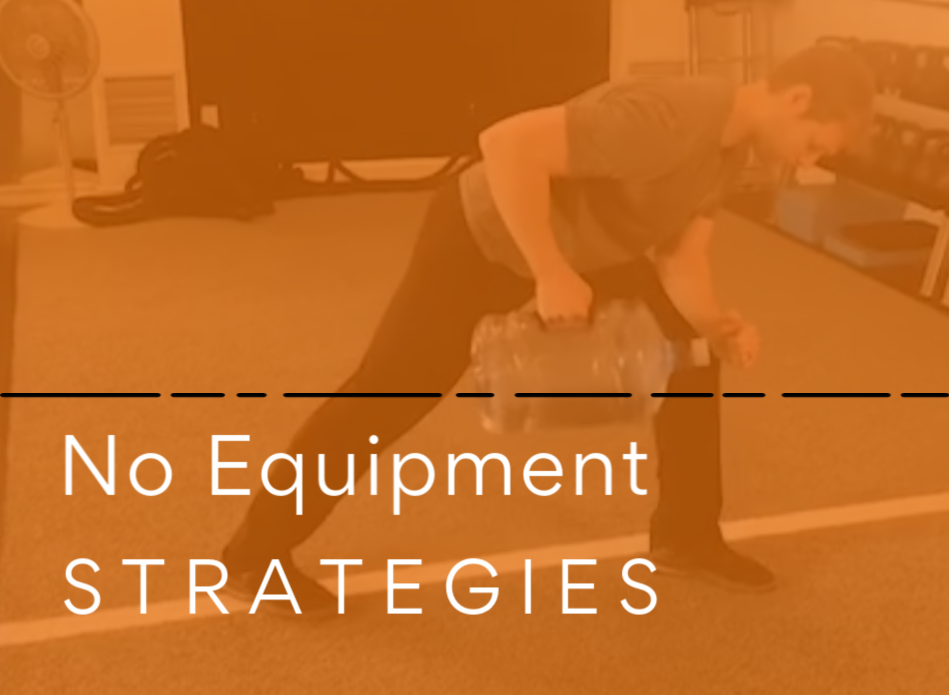Shelter-in-place orders have forced our clients to train away from their gym that may result in a decline in seeing results, or worse, unwanted weight gain. For most, this situation means no access to commercial-grade equipment. Clients are left scratching their heads on how to get a great workout, but the personal trainer is now tasked with getting creative, thinking outside the box, and keeping their clients’ gains coming with no equipment.
Fortunately there’s a lot more that you can do with your clients then you think. The best trainers in my opinion do not need certain pieces of equipment to get a great workout or develop a great fitness program for their clients. Thinking outside the box maybe the key to still get your clients amazing results regardless of the circumstances that we are all faced with at this time.
Here are 3 strategies that you can implement to keep the needle moving forward for your clients.
Increase Time Under Tension
Doing 50 squats with most of your clients per set doesn’t make a whole lot of sense. For one reason, you aren’t building strength or muscle, and their joints probably won’t be too happy with you the next day. In addition, doing super high repetitions will also become boring, leading to sloppy form, poor muscular control, and a loss of interest in those types of muscular endurance workouts. Instead, focus on fewer reps and making each rep count by slowing down and adding more time under tension.
Time under tension (TUT) is how long a muscle is under strain during a set. The average seems to take less than 20 seconds to complete a set of 10 repetitions for a typical lifter. If we double the time under tension with bodyweight work, we can place greater challenge on the muscles and see gains in strength and size despite just training with limited external resistance or equipment.
Your clients will “feel the burn” by simply manipulating the speed of each repetition performed. Slowing down the pace will also keep your clients’ form in check and injuries down. Your clients may feel entirely new level of appreciation of how challenging this is to do. Below are a few different ways to increase TUT.
TUT approaches:
Eccentric training, known as focused reps or “negatives“, are the phase of a movement where the “good” muscular damage occurs. It is the lengthening of the muscle that is also responsible for Delay Onset Muscle Soreness (DOMS). Below is a video of an Eccentric Pushup where all of the focus is controlling and resisting your body coming down, with a quicker, less-intense concentric “push” phase.
Isometric training can be used with your own bodyweight as well. The isometric contraction occurs when the muscle doesn’t change length and the affected joint doesn’t move. Here’s a video of Isometric training. For more isometrics exercises, check out the towel workout (link)
Mixed repetitions are a combination of both eccentric, isometric, and concentric repetitions (shortening of the muscle).
Here’s a video of what this looks like:
Use Unconventional Equipment
You’re only limited by your own imagination! If your clients do not have access to a fully equipped home gym (and most won’t) start thinking about what most people have at their disposal.
‘Do they have chairs? Do they have towels? Do they have a broom? Do they have water jogs? Do they have canned goods? Do they have a backpack? If they have any of these objects then you got a workout.
Weight is weight and it doesn’t matter if it’s a standard barbell or not. The body knows tension and load from anything will get the job done. Just be sure to do your due diligence and make sure that any equipment is safe and set up the correct way; the last thing you want is a client to get hurt.
Also for a cheap investment you can purchase a bundle of mini bands and a few resistance bands which provide endless options for workouts. Tension is tension, so it doesn’t matter if it’s originating a kettlebell, dumbbell, or band; the body will grow in strength. Also bands offer accommodating resistance, the further stretched out the band is, the more resistance you will get resulting in an increase of strength during different points of the lift.
Do More Single Limb Training
Have you ever worked on single limb training with clients? It’s challenging and an excellent way to break up the routine of exercise. We all have had clients do wall-sits but have you ever had them try a wall sit on one leg? It’s a huge quadriceps burner. How about pushup stance shoulder hold from opposite arm? This will light up your core and single-arm strength and stability on your shoulder.
Balance is also an element of training that naturally diminishes as we get older so important to throw in exercises that improve your stability. Try single-leg hinges, not only great for your hamstrings, glutes, and core but also the ability to balance on one leg. Try to do this movement slow to get even greater effect.
No one needs a world-class home gym to get the job done. Most of what you need to get a great workout for your clients is proper planning and utilization of what types of household items they have at their disposal.
Practice trying out home items yourself in your own workouts. Then slow the reps down, use single limb exercises in the mix, and if you do that, your clients won’t care if they are not in the gym.



